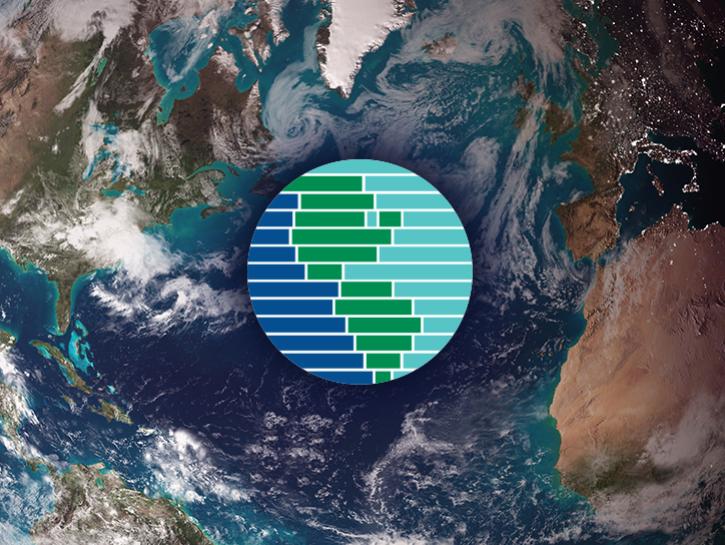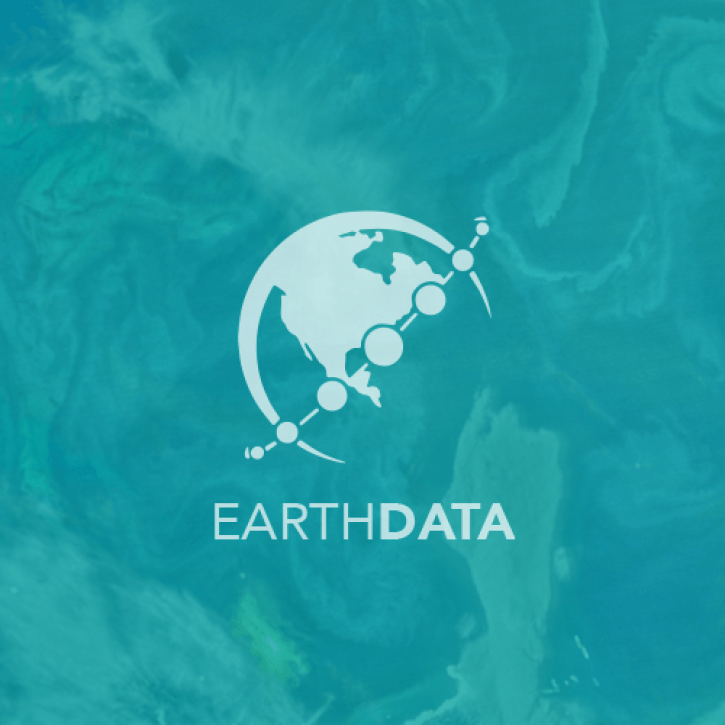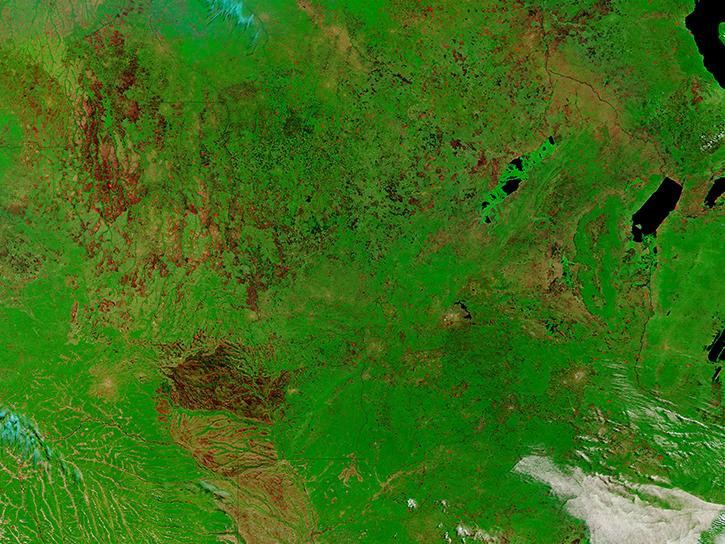We are in the process of migrating all NASA Earth science data sites into Earthdata from now until end of 2026. Not all NASA Earth science data and resources will appear here until then. Thank you for your patience as we make this transition.
Read about the Web Unification Project
Atmospheric Winds Data Access and Tools
NASA’s atmospheric wind data range from hourly primary forcing measurements to inter-related suites of atmospheric wind and other data. Our datasets and tools help users find and integrate the information they need to see how this primary weather force effects our lives and planet.
Table of contents
Atmospheric Winds Datasets
| Dataset | Platforms | Instruments | Temporal Extent | Location Keywords | Data Format |
|---|---|---|---|---|---|
| BOREAS TF-04 SSA-YJP Tower Flux, Meteorological, and Canopy Condition Data, R1 | FIXED OBSERVATION STATIONS | PSYCHROMETERS, NET RADIOMETERS, ANEMOMETERS, ANEROID PRESSURE SENSOR, EDDY CORRELATION DEVICES, IRGA, RAIN GAUGES, THERMOCOUPLES, LICOR QUANTUM SENSOR | 1993-09-02 to 1994-09-20 | ASCII | |
| BOREAS TF-05 Tower Flux & Meteorological Data | FIXED OBSERVATION STATIONS | SOIL HEAT FLUX TRANSDUCER, WIND MONITOR, LICOR QUANTUM SENSOR, THERMOCOUPLES, HUMIDITY SENSORS, OZONE SENSOR, IR CO2 ANALYZER, NET RADIOMETERS, EDDY CORRELATION DEVICES | 1994-05-23 to 1994-09-16 | ASCII | |
| BOREAS TF-06 SSA-YA Surface Energy Flux and Meteorological Data | FIXED OBSERVATION STATIONS | NET RADIOMETERS, PYRANOMETERS, RAIN GAUGES, SOIL HEAT FLUX TRANSDUCER, SONIC ANEMOMETER, TEMPERATURE SENSORS, THERMOCOUPLES, WIND MONITOR, HYGROMETERS, HUMIDITY SENSORS, BAROMETERS | 1994-07-19 to 1994-09-19 | ASCII | |
| BOREAS TF-07 SSA-OBS Tower Flux and Meteorological Data | FIXED OBSERVATION STATIONS | IRGA, SONIC ANEMOMETER, THERMOCOUPLES, PYRANOMETERS, PSYCHROMETERS, TUNABLE DIODE LASER, EDDY CORRELATION DEVICES | 1994-05-24 to 1994-09-18 | ASCII | |
| BOREAS TF-08 NSA-OJP Tower Flux, Meteorological, and Soil Temperature Data | FIXED OBSERVATION STATIONS | HYGROMETERS, IRGA, NET RADIOMETERS, Pyrgeometer, PYRHELIOMETERS, LICOR QUANTUM SENSOR, RAIN GAUGES, SOIL HEAT FLUX TRANSDUCER, SONIC ANEMOMETER, TEMPERATURE PROBES, SOIL MOISTURE PROBE, BAROMETERS, ANEMOMETERS | 1994-05-24 to 1996-11-12 | ASCII | |
| BOREAS TF-09 SSA-OBS Tower Flux, Meteorological, and Soil Temperature Data | FIXED OBSERVATION STATIONS | SOIL HEAT FLUX TRANSDUCER, IR CO2 ANALYZER, LICOR QUANTUM SENSOR, WIND MONITOR, RAIN GAUGES, TEMPERATURE PROBES, PYRANOMETERS, PSYCHROMETERS, NET RADIOMETERS, EDDY CORRELATION DEVICES | 1994-05-23 to 1996-11-29 | ASCII | |
| BOREAS TF-10 NSA-Fen Tower Flux and Meteorological Data | FIXED OBSERVATION STATIONS | ANEMOMETERS, THERMOCOUPLES, HYGROMETERS, SOIL HEAT FLUX TRANSDUCER, RAIN GAUGES, PYRANOMETERS, ANEROID PRESSURE SENSOR, Pyrgeometer, HUMIDITY SENSORS, WATER LEVEL GAUGES, LICOR QUANTUM SENSOR, IRGA, NET RADIOMETERS, EDDY CORRELATION DEVICES | 1993-08-15 to 1996-11-10 | ASCII | |
| BOREAS TF-10 NSA-YJP Tower Flux, Meteorological, and Porometry Data | FIXED OBSERVATION STATIONS | IRGA, LICOR QUANTUM SENSOR, ANEMOMETERS, THERMOCOUPLES, RAIN GAUGES, HYGROMETERS, SOIL HEAT FLUX TRANSDUCER, PYRANOMETERS, Pyrgeometer, LICOR PLANT CANOPY ANALYZER, NET RADIOMETERS, EDDY CORRELATION DEVICES, POROMETER, PRESSURE SENSORS | 1993-08-15 to 1996-11-15 | ASCII | |
| BOREAS TF-11 SSA-FEN Tower Flux and Meteorological Data | FIXED OBSERVATION STATIONS, LABORATORY | EDDY CORRELATION DEVICES, HUMIDITY SENSORS, IRGA, NET RADIOMETERS, PYRANOMETERS, LICOR QUANTUM SENSOR, SOIL HEAT FLUX TRANSDUCER, WATER LEVEL GAUGES, ANEROID PRESSURE SENSOR, ANEMOMETERS, TUNABLE DIODE LASER | 1993-08-23 to 1995-10-09 | ASCII | |
| BOREAS TGB-04 NSA-BVP Tower Flux and Meteorological Data | FIXED OBSERVATION STATIONS | LICOR QUANTUM SENSOR, ANEMOMETERS, THERMOCOUPLES, PSYCHROMETERS, PYRANOMETERS, ANEROID PRESSURE SENSOR, WATER LEVEL GAUGES, STREAM GAUGES, NET RADIOMETERS, IRGA, Bowen Ratio Devices | 1994-05-28 to 1994-09-17 | ASCII |
Pagination
SHOWING 10 OF 740
Featured Atmospheric Winds Observation Method: MODIS
The Moderate Resolution Imaging Spectroradiometer (MODIS) flies aboard the Terra and Aqua satellites and surveys Earth every one to two days. The multi-spectral instrument can be used in a variety of ways including detecting winds in different levels of the atmosphere.
Scientists develop routine service for wildfire detection in the continental United States with a latency of less than 60 seconds.
6 MIN READ
Join us to learn how to discover, subset, access and visualize both MODIS and VIIRS data products using a suite of user-friendly tools developed by NASA's ORNL DAAC.
MODIS Terra Collection 6 Aerosol, Cloud, and other Atmospheric Level-2 and Level-3 Data
Learn how to access and use Moderate Resolution Imaging Spectroradiometer (MODIS) Version 6 land data.
Atmospheric Winds Data Tools
| Tool Sort descending | Description | Services | |
|---|---|---|---|
| Worldview | Worldview offers the capability to interactively browse over 1,200 global, full-resolution satellite imagery layers and download the underlying data. | Analysis, Search and Discovery, Visualization, Access, Comparison, Monitoring Natural Events |
SHOWING 1 OF 1
Frequently Asked Questions
Earthdata Forum
Our online forum provides a space for users to browse thousands of FAQs about research needs, data, and data applications. You can also submit new questions for our experts to answer.
Submit Questions to Earthdata Forumand View Expert Responses

